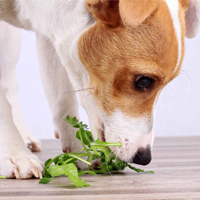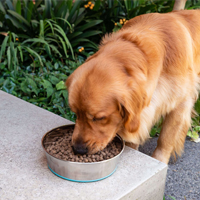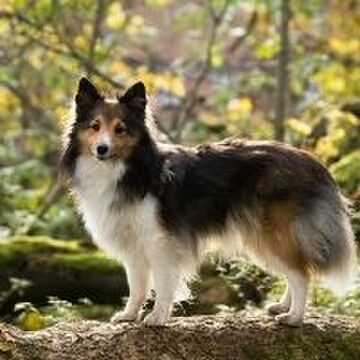
Safely Using Grindelia Squarrosa for Dogs
Grindelia squarrosa has outstanding medicinal properties that can be safely used for dogs. It is best known for cough suppression including its ability as an expectorant that stimulates the secretion of mucus.
It also has anti-inflammatory properties and can help relieve sore throats. It has been used in horses, cats, birds, and dogs to treat all sorts of respiratory afflictions.
- The most popular purpose for grindelia for dogs is that of an expectorant. Some suggest using it with honey or syrup and a little water. Many reports propose using one part grindelia elixir with one part syrup and/or honey and/or water, but your mileage may vary. Be aware that larger doses of grindelia elixir can cause sweating in some animals.
- You can make an itch-relieving tincture with grindelia. This is made from the leaves and flowers of asteroid composites. Dilute the tincture 1:10 with water and you will produce an effective treatment for your uncomfortable dog. This can be used in a spray bottle or administered directly to the skin using a cotton ball. Apply as needed and watch the area for changes. Discontinue use if your dog has an allergic reaction.
- You can make a salve with grindelia. Use two ounces of grindelia flowers, a cup of olive oil, a quarter cup of melted beeswax, and perhaps a bit of lavender. Combine the oil and herbs in a crock pot for a few hours on low, then strain out the flowers and add the melted beeswax. Fill up some containers with the salve and use as necessary when your four-legged friend is suffering from itchy skin.
There are some grindelia extracts and expectorants available on the market, but be careful. Some are made from the dried herb and are less potent when contrasted to the above mentioned expectorant. The bitter taste of the herb may make a prepared pet supplement a better option, so you’ll have to do a little experimenting to see what works best.
Preventative Measures
Most anecdotal evidence regarding grindelia squarrosa for dogs is positive. There are few known side effects, but grindelia has not been researched to any significant degree. There is some evidence that states that using larger doses of grindelia can lead to profuse sweating in some animals.
Grindelia concentrates selenium, which is toxic in especially large amounts. Selenium is present in things like multivitamins and infant formulas and is necessary for cellular function, which suggests that it is safe when used in appropriate doses.
You should monitor your dog’s reaction to grindelia, regardless.
Reasons to Use
There are a many reasons to use grindelia squarrosa for dogs. We are excited about its capability as an expectorant and find that it is one of the finest cough suppressants available in the natural world. Grindelia is also great for itch relief. Its anti-inflammatory properties alleviate all sorts of skin conditions and make it a great choice for topical use.
Using grindelia for dogs is safe and side effects are minimal, but always take care when using any herbal treatment.
More About Grindelia
There are several useful herbs when it comes to the sunflower family, but today we’re going to take a special interest in grindelia for dogs. Grindelia, also known as gumweed, can be divided into a number of species.
Of special interest is grindelia squarrosa or curlycup gumweed, which can be found in the United States. There is also grindelia robusta, which is a coastal bush renowned for medical uses.
Grindelia squarrosa is a short-lived perennial plant found in North America. It can be found on roadsides and near streams and features grey-green leaves with yellow flowers.
There are dozens of flowers per head and the plan blooms throughout the summer. It is used by the Great Plains Tribe as a medicinal herb to treat all manner of illnesses, including skin rashes and arthritis.
Grindelia is surprisingly easy to grow. It can be planted in poor soil with no fertilization. It requires sunlight but does not require much attention. It is similar in construction and growth to the dandelion, but it has a “gummy” secretion that gives it its name. It also concentrates on selenium and has a bitter taste.
References: Herbs for Pets by M.L. Wulff-Tilford and G.L. Tilford, Natural Remedies for Dogs and Cats by CJ Puotinen










